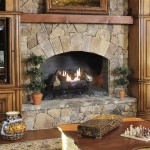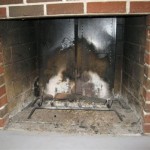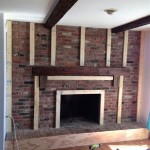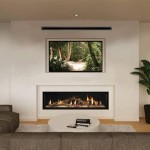Understanding Natural Gas Ventless Fireplaces
Natural gas ventless fireplaces, also known as natural gas no vent fireplaces, offer a heating solution that eliminates the need for a traditional chimney or venting system. These appliances burn natural gas, producing heat that radiates directly into the room. Their operation and installation differ significantly from vented gas fireplaces, necessitating a thorough understanding of their principles, safety considerations, and maintenance requirements.
Unlike traditional fireplaces that require a chimney to exhaust combustion byproducts, ventless models utilize a specially designed burner system that aims for near-complete combustion. This process minimizes the creation of harmful emissions, particularly carbon monoxide. However, complete combustion is rarely achievable under all conditions, and as a result, ventless fireplaces incorporate oxygen depletion sensors (ODS) to monitor room oxygen levels. The ODS system shuts off the gas supply to the burner if oxygen levels drop below a predetermined safety threshold, mitigating the risk of carbon monoxide poisoning.
The appeal of natural gas no vent fireplaces lies in their installation flexibility and potential cost savings. Because they don't need a chimney, they can be installed in locations where a conventional fireplace would be impractical or impossible. This feature makes them attractive for apartments, condominiums, or rooms without existing fireplace infrastructure. Furthermore, the absence of a chimney means that heat is not lost through the venting system, potentially leading to higher heating efficiency compared to vented options.
Key Point 1: Operation and Safety Mechanisms
The fundamental principle behind a natural gas ventless fireplace is the efficient and complete combustion of natural gas. The burner design plays a critical role in achieving this goal. These burners typically feature intricate port arrangements that ensure proper mixing of natural gas and air. The design aims to maximize the flame surface area and promote thorough combustion, thereby reducing the formation of incomplete combustion products.
Despite these design features, some level of incomplete combustion is unavoidable. This reality underscores the importance of the Oxygen Depletion Sensor (ODS). The ODS is a crucial safety component that continuously monitors the oxygen levels in the room. It operates on the principle that incomplete combustion consumes oxygen at a faster rate. If the ODS detects a significant drop in oxygen concentration, indicating a build-up of carbon monoxide or other harmful gases, it automatically shuts off the gas supply to the fireplace. This safety mechanism is designed to prevent carbon monoxide poisoning, a potentially fatal consequence of poorly ventilated gas appliances.
Beyond the ODS, ventless fireplaces often incorporate other safety features such as pressure regulators and flame failure devices. Pressure regulators maintain a consistent gas supply to the burner, ensuring stable and efficient combustion. Flame failure devices detect if the pilot light or main burner flame is extinguished. If a flame outage occurs, the device shuts off the gas supply, preventing unburned gas from accumulating and posing an explosion hazard. These multiple layers of safety features are essential for responsible operation.
It is crucial to emphasize that while ventless fireplaces are designed for safe operation, they are not a replacement for proper ventilation practices. Users should always ensure adequate airflow in the room where the fireplace is installed. Opening a window slightly can help maintain sufficient oxygen levels and prevent the buildup of combustion products. The fireplace manufacturer's instructions regarding room size requirements and ventilation recommendations must be strictly adhered to.
Key Point 2: Installation Considerations and Requirements
The installation of a natural gas ventless fireplace is less complex than that of a traditional vented fireplace. However, it still requires careful planning and adherence to local building codes and manufacturer instructions. Unlike vented fireplaces, no chimney or flue installation is necessary, simplifying the process significantly. The fireplace unit can be placed against an interior wall, provided that all clearance requirements are met. These requirements specify the minimum distance between the fireplace and combustible materials such as walls, furniture, and curtains. These clearances are critical for preventing overheating and potential fire hazards.
A qualified professional should always perform the gas line connection and any necessary electrical work. Improper gas line connections can lead to gas leaks, posing a significant explosion risk. Similarly, incorrect electrical wiring can result in electrical shocks or damage to the fireplace components. Engaging a licensed plumber or HVAC technician ensures that the installation is performed safely and in compliance with all applicable codes.
Another critical aspect of installation is ensuring proper ventilation. While these fireplaces are classified as "ventless," they still require a certain level of air exchange to maintain adequate oxygen levels and prevent the buildup of combustion byproducts. Most manufacturers specify a minimum room size for each fireplace model, which is based on the BTU output of the unit. Smaller rooms require more ventilation than larger rooms to maintain safe air quality. It is generally recommended to have a source of fresh air in the room, such as a slightly open window or a ventilation duct. Ignoring ventilation requirements can lead to oxygen depletion and carbon monoxide buildup, posing a serious health risk.
Furthermore, the location of the fireplace should be carefully considered. It should be placed in a well-ventilated area, away from obstructing furniture or flammable materials. The fireplace should also be installed on a level surface to ensure proper burner operation and prevent tipping hazards. Following the manufacturer's instructions regarding installation height and floor protection is also essential. These precautions contribute to the safe and efficient operation of the fireplace.
Key Point 3: Maintenance and Troubleshooting
Routine maintenance is essential for ensuring the safe and efficient operation of a natural gas ventless fireplace. Regular cleaning is necessary to remove dust, lint, and other debris that can accumulate on the burner, pilot light, and surrounding components. A soft brush or vacuum cleaner can be used to clean these areas. Accumulated debris can obstruct airflow and hinder proper combustion, potentially leading to the formation of carbon monoxide.
The pilot light should be inspected regularly to ensure that it is burning with a clean, blue flame. A yellow or orange flame indicates incomplete combustion and may require cleaning or adjustment. A qualified technician should perform any necessary adjustments to the pilot light or gas valve. Attempting to adjust these components without proper training can be dangerous.
The Oxygen Depletion Sensor (ODS) should also be tested periodically to verify its functionality. The manufacturer's instructions typically provide a procedure for testing the ODS. If the ODS fails to shut off the gas supply when oxygen levels are artificially lowered, it should be replaced immediately. A malfunctioning ODS poses a significant safety risk and should not be ignored.
Common troubleshooting issues include pilot light outages, burner problems, and gas leaks. Pilot light outages can be caused by a dirty pilot light assembly, a faulty thermocouple, or a weak gas supply. Burner problems can result from clogged burner ports, improper gas pressure, or a malfunctioning gas valve. Gas leaks should be addressed immediately by a qualified technician. If a gas leak is suspected, the gas supply to the fireplace should be shut off, and the area should be ventilated before attempting any repairs.
Users should be aware of the signs of carbon monoxide poisoning. These symptoms can include headache, dizziness, nausea, vomiting, and confusion. If carbon monoxide poisoning is suspected, the affected person should be moved to fresh air immediately, and medical attention should be sought. Installing a carbon monoxide detector in the room where the fireplace is located is highly recommended as an additional safety measure. A working carbon monoxide detector can provide an early warning of dangerous carbon monoxide levels, allowing occupants to evacuate the premises before serious health consequences occur.
In summary, while natural gas ventless fireplaces offer an alternative heating solution with installation flexibility, they require careful attention to safety considerations, installation requirements, and maintenance procedures. Proper operation, ventilation, and routine maintenance are essential for ensuring safe and efficient performance. Adhering to the manufacturer's instructions and engaging qualified professionals for installation and repairs are crucial for minimizing the risks associated with these appliances. By understanding the principles and precautions involved, users can enjoy the benefits of a ventless fireplace while maintaining a safe and healthy environment.
:max_bytes(150000):strip_icc()/ventless-gas-fireplaces-4160746-hero-f9d4bdcd9bd446eb84406de306f790ba.jpg?strip=all)
How To Pick Out A Ventless Gas Fireplace

What Is A Ventless Gas Fireplace Experts In Gaithersbutg Md

Considering A Ventless Gas Fireplace Here S What You Need To Know Bob Vila

Ventless Gas Fireplace Propane

Ventless Gas Fireplace Vent Free Modern

Are Vent Free Gas Fireplaces Safe Ventless

Radiance Vent Free Gas Stove The Place

Pleasant Hearth 27 500 Btu 42 In Convertible Ventless Natural Gas Fireplace Cherry Vff Ph26ng The Home Depot

Blog Your Fireplace Questions Answered Regency

Artisan 60 Inch Vent Free Linear Fireplace Fine S Gas
Related Posts








